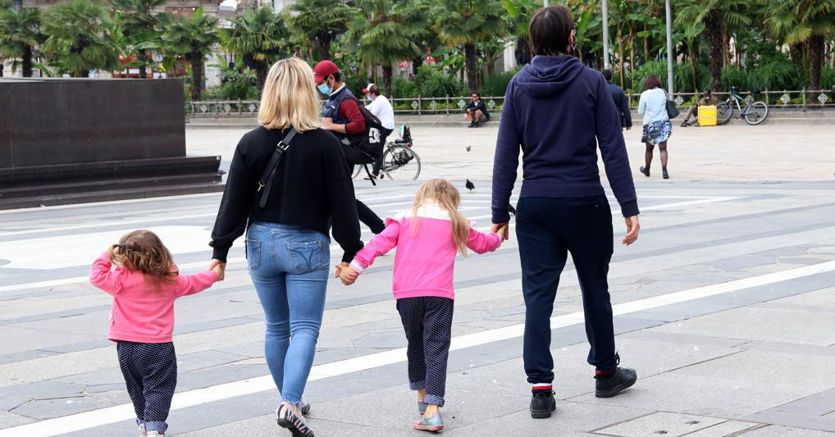In the 2017-2020 period, households made up of two adults and one or more minor children spent on average just over € 640 per month to support each child (a quarter of the average cost of an Italian family). This is what Bank of Italy highlighted in the Annual Report on 2021. The amount, almost stable in the three-year period 2017-19, contracted in 2020 to 580 euros (12% less than 2019), when fears of contagion and Mobility restrictions associated with the pandemic have greatly reduced consumer spending, particularly for transport and leisure.
60% of the expenditure destined to satisfy basic needs
The estimate of 640 euros includes the purchases of goods and services intended exclusively for children (for example food for babies and school fees) and a share of consumption recorded at the family level (such as costs for housing and transport), estimated using different distribution criteria. Almost 60 per cent of the expenditure was destined to meet basic needs (food, clothing and expenses for the home, education and health) ».
In the South, expenditure per child is lower than in the North
In the South, expenditure per child was lower than in the Center and North. However, the incidence on average household expenditure is similar in the two macro-areas. About a fifth of the gap concerned housing costs, which reflect the higher cost of real estate in the central and northern regions, and about two thirds of less essential consumption (leisure, transport and other). As regards real estate, the Bank of Italy report highlights that in all regions of the South, house prices (per square meter and size) are significantly lower than the national average. In the North, tenant families who are in conditions of absolute poverty allocate about 40% of the total expenditure to the payment of the rent, almost 10 percentage points more than in the South. Comparing the poverty thresholds defined by Istat, the only official source for measuring the purchasing power parity of expenditure, the purchase price of a basic basket of household consumption is about 20% lower in the South than in the Center and by 24%. compared to the North.
The single and universal check
Bank of Italy recalls that since last March the disbursement of the single and universal allowance (AUU) has begun to strengthen the economic support measures for households with children. The maximum amount of the AUU, it is concluded, would be sufficient to sustain, according to the estimation approach, between one third and one half of the expenses necessary for families in the first fifth of income to support a minor. According to the latest INPS survey, 8,091,275 children have been requested to pay the allowance from the social security institution, corresponding to 5,049,157 applications forwarded as of May 30th. The average number of children per application is 1.6.
The strengthening of nursery schools
A further measure to support families, continues Banitalia, is envisaged by the National Recovery and Resilience Plan, which has planned a significant increase in the number of places available in nursery schools (228,000 units when fully operational). In Italy, the share of children under the age of 3 who use these services is the lowest among the main European countries (25% in 2019, against 30 in Germany and over 50 in France and Spain). In 2019, more than 10 per cent of women who were not working and with children under the age of 3 declared that they did not participate in the labor market due to the absence of care services. A greater availability of the latter – concludes the institute of Via Nazionale – could have positive effects on the offer of work both immediately and throughout the working life, since the exit of mothers from the labor market at the birth of a child is associated on average with a lower probability of employment even in the long term.
